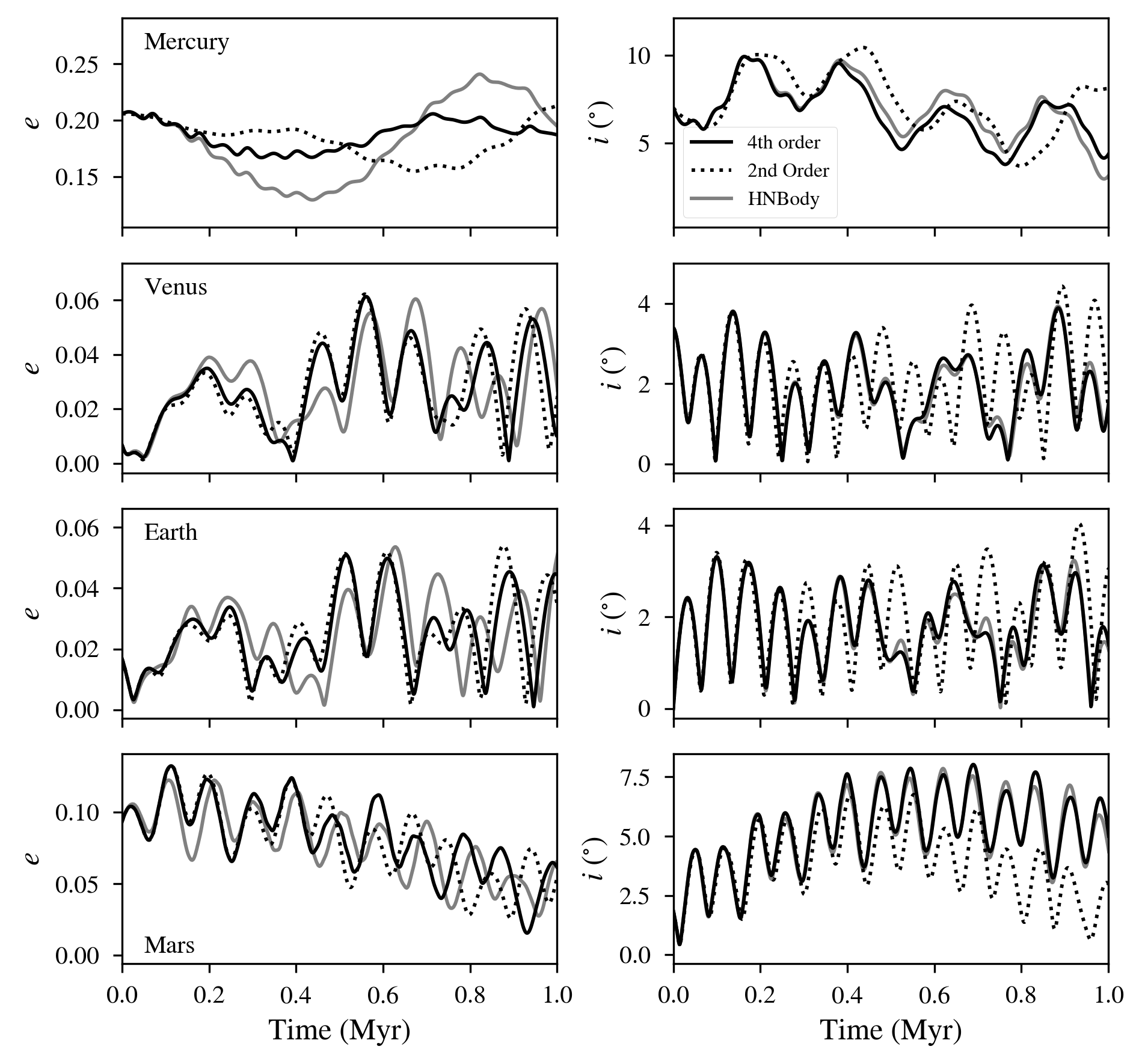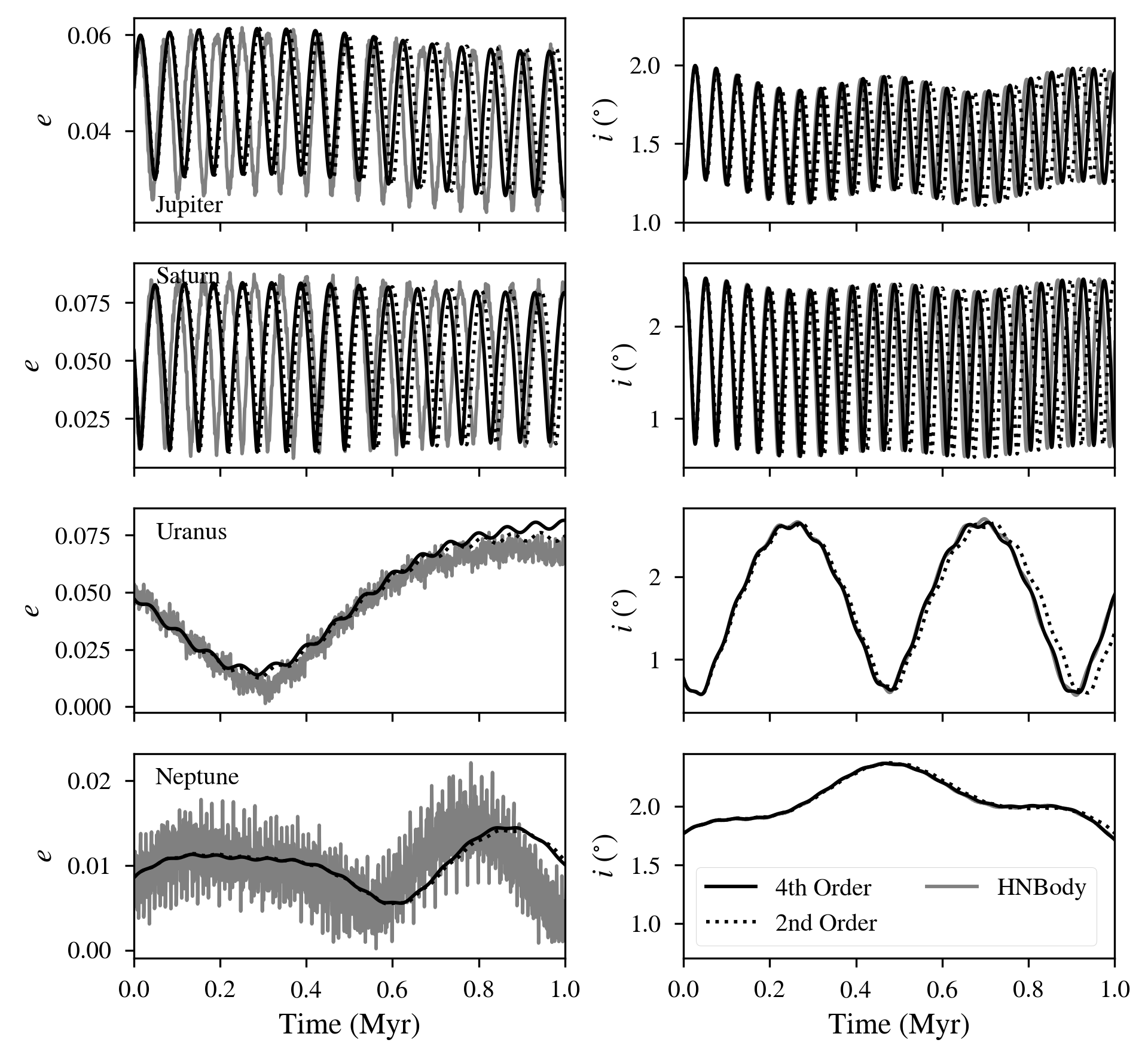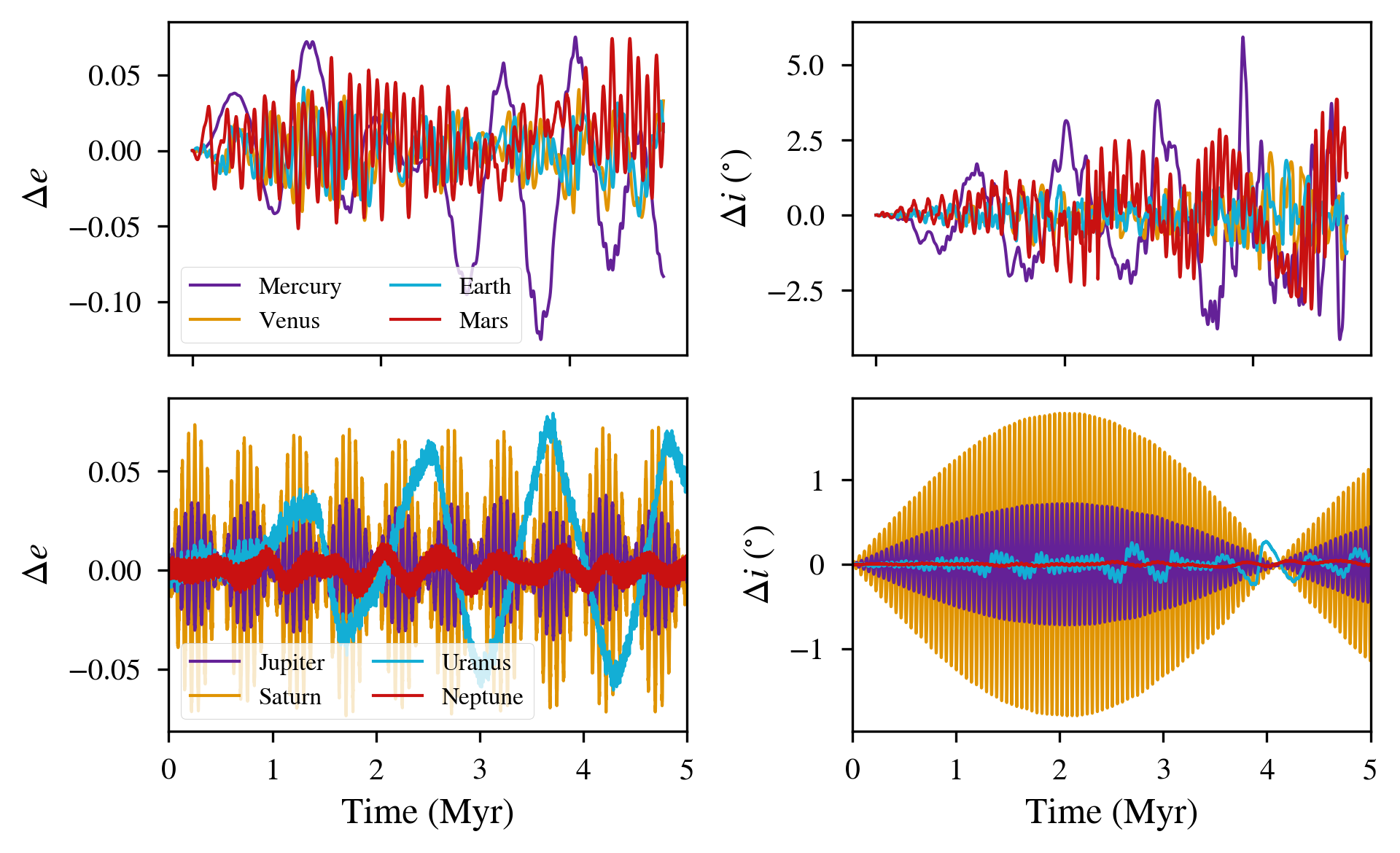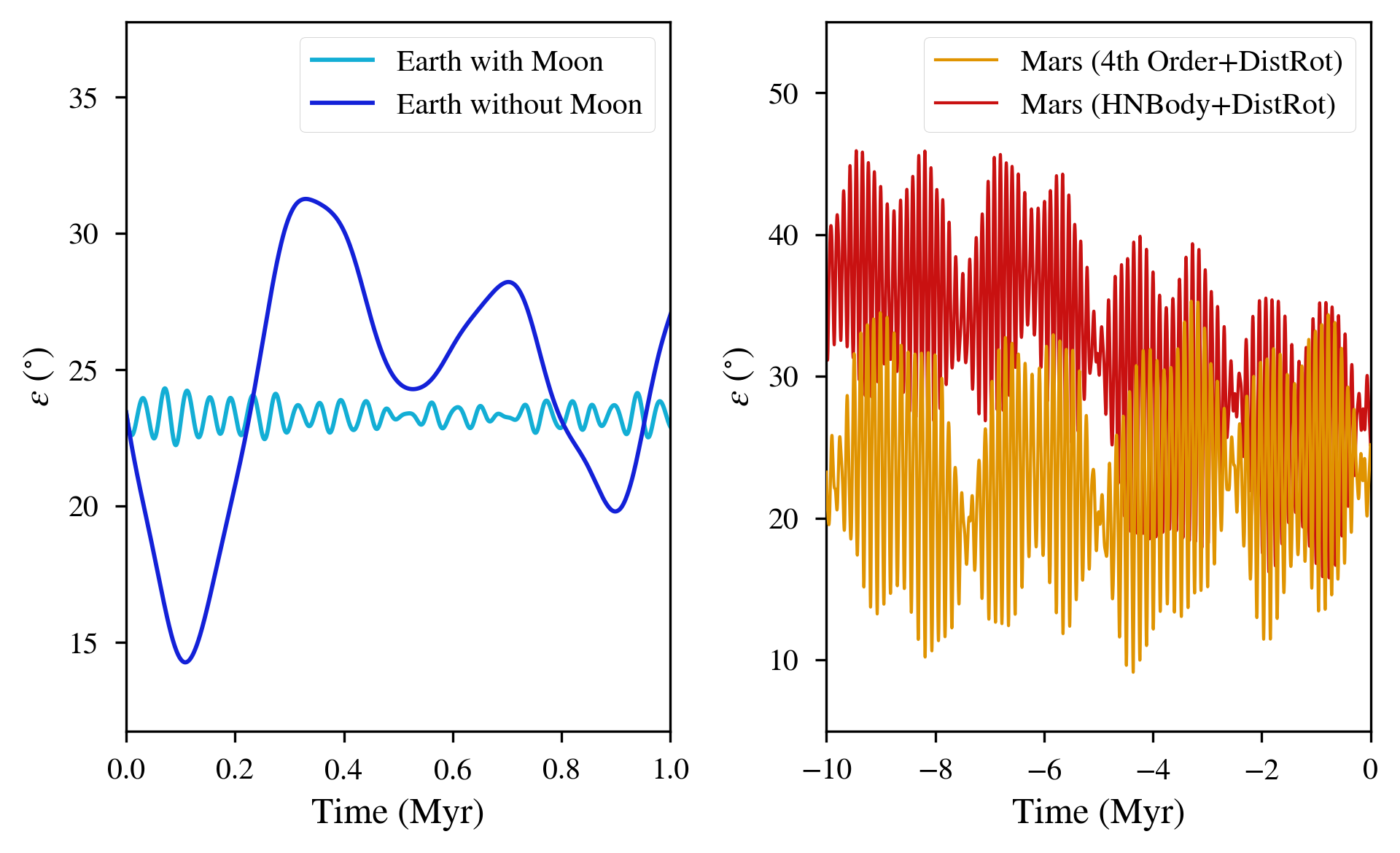Solar System Orbital Dynamics from Secular Theory
Overview
Orbital and rotational evolution of the Solar System.
Date |
07/24/18 |
Author |
Russell Deitrick |
Modules |
DistOrb DistRot |
Approx. runtime |
116 seconds (
vpl.in)112 seconds (
womoon/)25 seconds (
marshnb/)110 seconds (
marsvpl/) |
This example uses DistOrb to model the orbits of the solar system planets and
DistRot to model the obliquity evolution of Earth and Mars. In this main
directory, the precession of the Earth’s spin axis is forced to its present
day value to emulate the effect of the Moon. In the womoon directory,
the same simulation is run, but without this precessional forcing. The
directory marsvpl contains a simulation of Mars’ obliquity backward in time
using DistOrb and DistRot. This result can be compared to marshnb output, which utilizes
orbital data from HNBody (Rauch & Hamilton 2002) to demonstrate the effects
of secular resonances not resolved by DistOrb. Note that DistRot can use orbital
elements generated by non-VPLanet sources.
To run this example
python makeplot.py <png | pdf>
Expected output

Eccentricity evolution (left) and inclination evolution (right) for the inner solar system planets over the next 1 Myr. Initial condition are taken from Appendix A of Murray & Dermott (1999).


Absolute errors in the eccentricity (left) and inclination (right) between 4th order DistOrb and HNBODY over 5 Myr. Upper panels show the inner solar system planets and lower panels show the outer planets.

Obliquity evolution of Earth with and without the Moon over the next Myr (left) and Mars using secular and N-body models for the orbit over the last 10 Myr (right).